Most of this area consists of coastal slash pine forests, coastal prairies, and salt marshes. The sandy soils in these habitats are ideal for the Gopher Tortoise (Gopherus polyphemus), a species I've seen plenty of times in the past, but was unable to see one outside of its burrow on this trip. Another species is also particularly common in this part of the country and also excavates its own burrow in the loose, sandy soil. While walking along a dense patch of saw palmetto, I heard movement and decided to stop and try and figure out exactly what was nearby.
This Nine-banded Armadillo (Dasypus novemcinctus) emerged shortly after and was clearly foraging around the bases of the saw palmetto and small clumps of grass for insects and other invertebrates. Armadillos have poor eyesight, and as long as you don't make any sudden movements, they are usually fairly unaware to your presence. This guy came within a few inches of my left foot and then moved on. As I pressed on, the heat of the day began to pick up. I had a brief encounter with what I believe to be my first Eastern Coachwip (Masticophis flagellum), it was crossing the trail about 30 yards ahead of me and before I could even think about making a run for it, it disappeared into the brush off the side of the trail. No rattlesnakes were seen on this trip, likely due to the cooler temperatures. My good friend Chris Boguslawski arrived late that night to central Florida, and the next morning we were on our way to the southern half of the state. A brief stop to flip some cover north of the big lake yielded lots of these sharp looking lizards.
Southeastern Five-lined Skink - Plestiodon inexpectatus
Many of the individuals we saw at this location were adult males that were sporting their breeding colors, like the one shown above. Many of the skink species which inhabit the eastern United States exhibit this "red-headed" look during the breeding season including the skinks we have in Michigan. A few more stops at flipping sites yielded nothing but fire ants and a few large rats, I'm not sure on what species they were. We arrived to the southern part of the state around 11am, and we set out. Chris's main targets for this trip were an alligator and a cottonmouth as he had never been further south than southern Illinois. We swung by a popular spot and got his first target knocked off the list.
American Alligators - Alligator mississippiensis
The coastal prairies and scattered brackish lakes and inlets provide excellent habitat for a variety of wildlife species. Several large snake species including Eastern Diamondback Rattlesnakes (Crotalus adamanteus) inhabit these habitats where they hunt rodents and rabbits. Unfortunately, the invasive Burmese Python (Python molurus bivittatus) also is known to haunt these areas as well. As we were walking a trail through a denser patch of mangroves, I was being sure to keep my eye on the patches of dappled sunlight at the base of the mangroves. As we rounded a corner in the trail, a large caramel yellow shape caught my eye. It was a massive Florida Kingsnake, a brooksi, the first one I had seen since my first trip to southern Florida back in 2008. I was somehow able to get the guys' attention despite being incredibly excited, and as I made a run for her she disappeared into some thick underbrush. After a few minutes of digging around in the dense stuff, Chris called out that he had a visual on her and he was able to flush her right into my hands.
Chris was elated to see his first alligators in the wild, and was surprised with just how many we saw. This large wetland complex is home to large numbers of alligators and is also a large rookery for anhingas and double-crested cormorants. While we were exploring the area, we noticed our first snake of the trip taking shelter in the crumbling foundation of a foot bridge.
Brown Water Snake - Nerodia taxispilota
This large Nerodia species is among the largest water snakes which inhabit North America, the only other species which is larger is the Florida Green Water Snake (Nerodia floridana). I carefully extracted this snake for a few quick photos and then let him go right back to where we had found him. Chris had also mentioned interest about seeing crocodiles, so we headed further south to the mangroves. Along the way, we cruised up a large Everglades Racer (Coluber constrictor paludicola) which got off the road before we could get to it, but a short time later we cruised up this little snake.
Peninsula Ribbon Snake - Thamnophis sauritus sackenii
Of the ribbon snakes which occur east of the Mississippi, this subspecies is probably the least attractive. Even so, they are always a cool little snake to see while in Florida. After a very brief photo session, we let the snake go and continued further south. The road was littered with DORs, likely due to the changing weather conditions, as a low pressure system was supposed to move in over night. When we arrived in the mangroves, it didn't take long for us to spot a few crocs.
American Crocodiles - Crocodylus acutus
American crocodiles have made a remarkable comeback in southern Florida thanks for conservation efforts and protection under the ESA. We also saw one or two patrolling a nearby canal but were unable to get any good photos due to the thick mangroves. It was now the mid afternoon and temperatures had risen above 80 degrees Fahrenheit, so we decided to explore some of the coastal prairies and mangroves in the area.
The coastal prairies and scattered brackish lakes and inlets provide excellent habitat for a variety of wildlife species. Several large snake species including Eastern Diamondback Rattlesnakes (Crotalus adamanteus) inhabit these habitats where they hunt rodents and rabbits. Unfortunately, the invasive Burmese Python (Python molurus bivittatus) also is known to haunt these areas as well. As we were walking a trail through a denser patch of mangroves, I was being sure to keep my eye on the patches of dappled sunlight at the base of the mangroves. As we rounded a corner in the trail, a large caramel yellow shape caught my eye. It was a massive Florida Kingsnake, a brooksi, the first one I had seen since my first trip to southern Florida back in 2008. I was somehow able to get the guys' attention despite being incredibly excited, and as I made a run for her she disappeared into some thick underbrush. After a few minutes of digging around in the dense stuff, Chris called out that he had a visual on her and he was able to flush her right into my hands.
Florida Kingsnake - Lampropeltis getula floridana
I love kingsnakes. But the kings that inhabit the southern tip of Florida are in a league of their own. The caramel yellow, faint banding, and highly speckled appearance are just incredible, photos do not do these snakes justice. This was a large female, probably over five in length, one of the more impressive snakes I've seen in the field over the past few years. This species is a large, powerful constrictor which primarily feeds on rodents, especially wood rats. They may occasionally take larger prey such as rattlesnakes. This snake was once more common in southern Florida, but commercial and private collectors have diminished their numbers due to their popularity in the pet trade. The snake is still locally common in some places, but it is not encountered as frequently as it used to be. We spent a few minutes simply admiring this beautiful snake and then let her on her way. In my opinion, these snakes are so much more impressive in their natural habitat than they are in a cage. If you see one, let it on its way. Went spent the next few hours traversing some more habitat but came up empty handed. The sun was starting to get low, so we set out for some road cruising. Just before sundown, I spotted this little garter snake peeking onto the road.
Eastern Garter Snake - Thamnophis sirtalis sirtalis
I like the look of garter snakes the further south you get in their range in comparison to the ones found in Michigan. We snapped some quick photos of this little fella and then continued on. We stumbled across a few DORs here and there right around sunset, and then just after dark, we cruised up our second AOR snake of the evening.
Yellow rats are always a treat. This sub-adult was about two feet in length and was just beginning to lose it's juvenile patterning. Rat snakes from this region of Florida seem to feature more orange than their counterparts further north in the state. The Everglades Rat Snake (Pantherophis quadrivittatus rossaleni) was once recognized as a subspecies of the Yellow Rat Snake due to its bright orange coloration and lack of striping, but the validity of the subspecies came into debate soon after it was described in 1949. Either way, it was a sharp looking snake that was a lifer for Chris and an always welcome find for me. Shortly after letting this snake go, we cruised a handful of Nerodia including a large DOR Florida Green Water Snake (Nerodia floridana) and this guy, who was extremely sluggish but did not appear to have any physical trauma.
Florida Water Snake - Nerodia fasciata pictiventris
We saw a handful of others in a brief stretch of road. One of Chris's biggest targets for this trip to Florida was to see a cottonmouth. So we decided to get out on foot and walk some cypress domes in the dark in hopes of seeing a few, which I assured him would be no problem. After a few minutes of trudging around in darkness, my headlamp caught a bit of patterning coiled next to a cypress knee.
Florida Cottonmouth - Agkistrodon piscivorus conanti
This large adult was more than happy to sit still for a few photos. The temperature had dropped rapidly due t the arrival of the cold front, so this snake was a little sluggish and did not attempts to gape even once. There was also a juvenile cottonmouth that was active in a small pool nearby, and we found two adults coiled underneath and overhanging bank near a small pool as well.
Temps dropped off enough the end activity for the night, so we packed up and headed back north to try our luck in central Florida the next day. Chris and I slept in a bit and then decided to poke around some areas in central Florida, the cold front had brought a chill once again and temperatures were only supposed to reach the high 60s. We started our day at a preserve in central Florida which contains a large wetland complex that is home to a myriad of bird species and a good amount of aquatic snakes. Here's a few photos of some various fauna we saw throughout the wetlands.
Temps dropped off enough the end activity for the night, so we packed up and headed back north to try our luck in central Florida the next day. Chris and I slept in a bit and then decided to poke around some areas in central Florida, the cold front had brought a chill once again and temperatures were only supposed to reach the high 60s. We started our day at a preserve in central Florida which contains a large wetland complex that is home to a myriad of bird species and a good amount of aquatic snakes. Here's a few photos of some various fauna we saw throughout the wetlands.
Peninsula Cooters - Pseudemys peninsularis
Purple Gallinule - Porphyrio martinicus
Blue-winged Teals - Anas discors
Little Blue Heron - Egretta caerulea
Green Heron - Butorides virescens
We didn't see any snakes at this location unfortunately, though I've seen many here in the past. While we were walking down an elevated dyke which separates two management tools from one another, we heard a loud cracking sound from above us. A large cypress tree that was at least forty feet in height came crashing down 10-15 feet in front of where we were walking. We had taken a few steps back as soon as we heard the cracking sound, not knowing what it was. I'm glad we did.
The sound of the crashing tree caused birds to scatter across the marsh. The fallen tree had made the trail impassible as you can see above, so we decided to head out and try our luck at a new location. The cool temperatures were pretty ideal for snakes to be out basking, just not for anything to be moving about too much. We did eventually get our hands on this racer which was basking at the edge of a large saw palmetto thicket.
Southern Black Racer - Coluber constrictor priapus
With the exception of this snake and the ass end of a gopher tortoise, we struck out at this location as well. We headed a little further north to some state forest land to walk some habitat and flip cover. We found a large amount of boards to flip, but we were unable to find any herps under cover or out in habitat. However, we did manage to flip this cool little arachnid.
Hentz Striped Scorpion - Centruroides hentzi
These small scorpions are one of a few species which inhabit Florida. This species gets its name from the three orange stripes which run down the middle of the body. Its sting is no worse than that of a bee, but it's still something I didn't want to experience first hand. Although the cool temperatures during the week had kept numbers of snakes to a minumum, I still had a fantastic time in the field with Chris. The highlight of the week was definitely the kingsnake, a truly impressive snake to meet in the field. March is drawing to an end here in Michigan and warm weather is on the horizon, stay tuned for the spring salamander migrations.

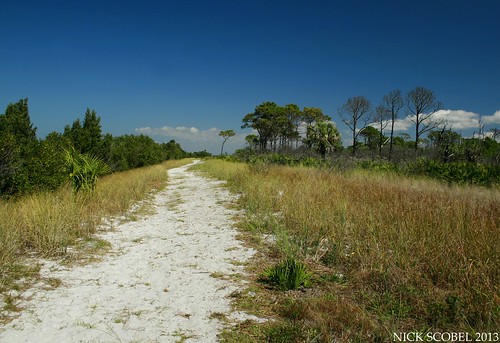

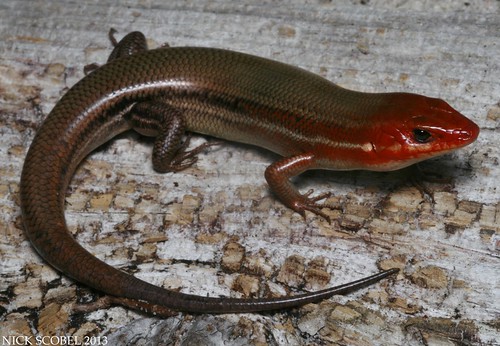
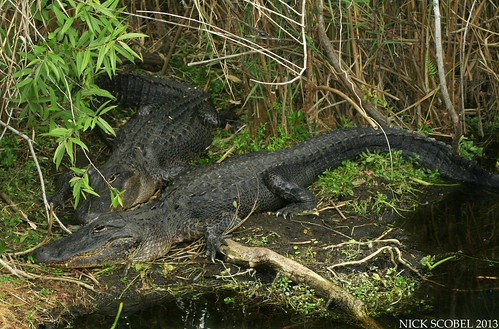
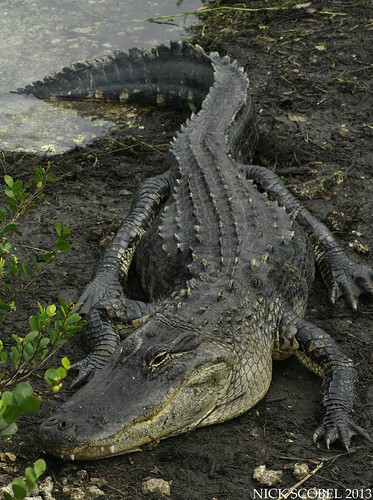
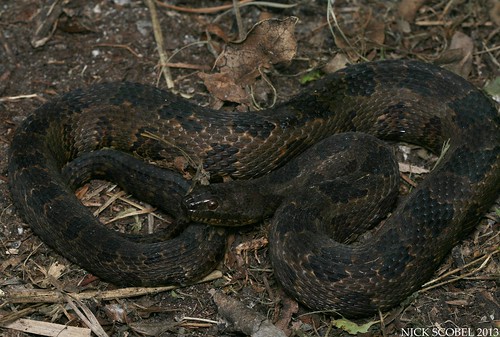
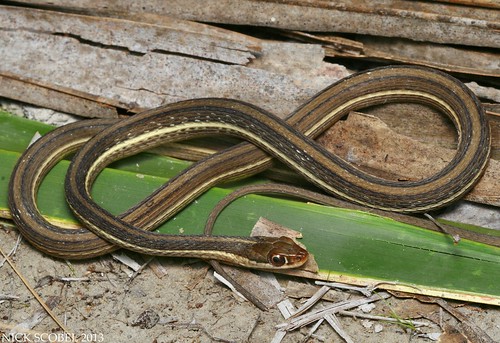
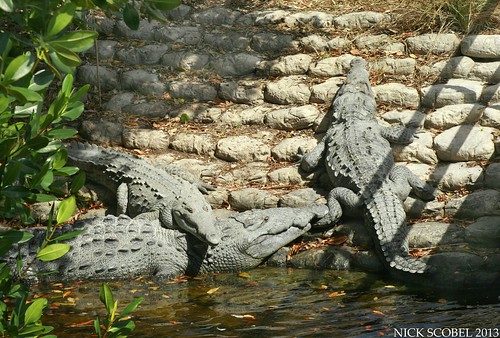



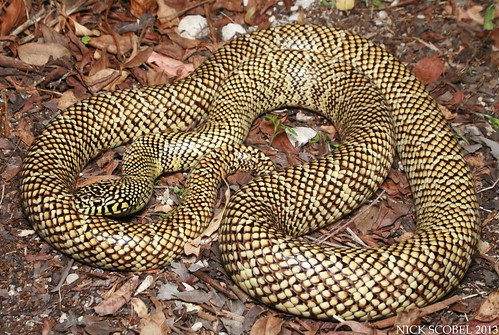
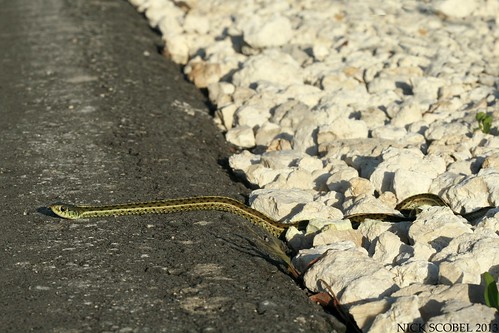
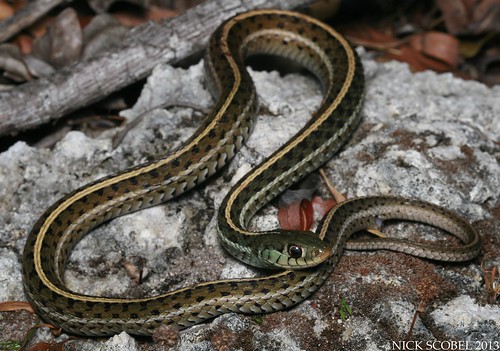


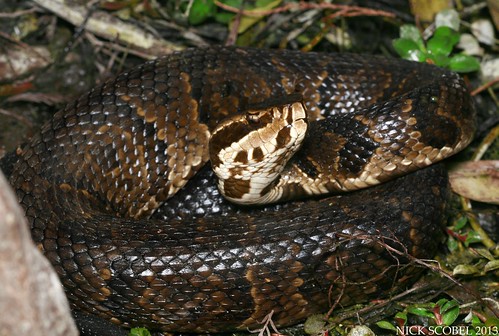
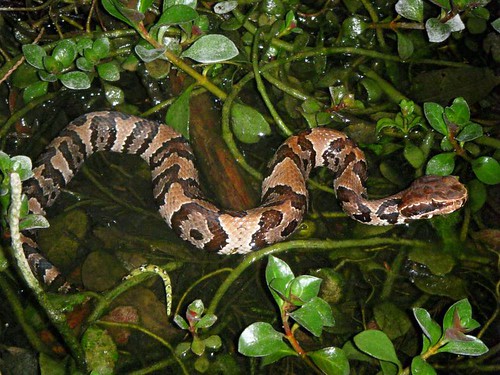



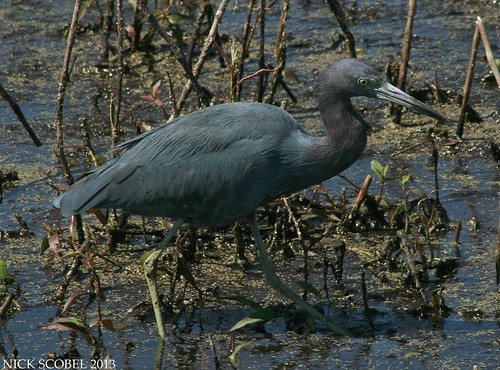
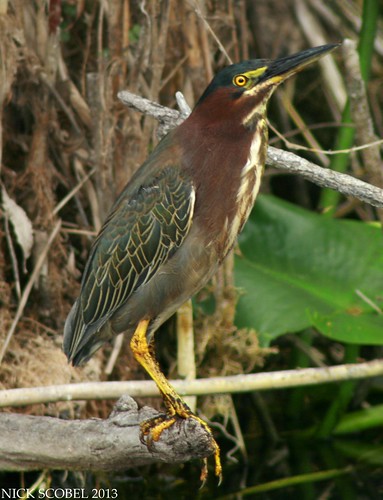
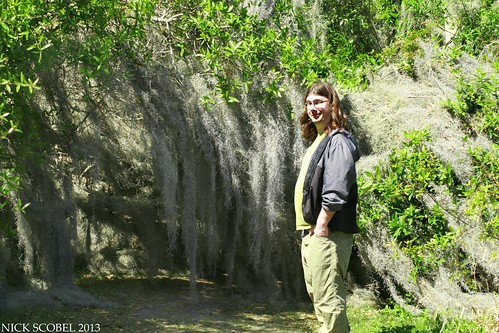
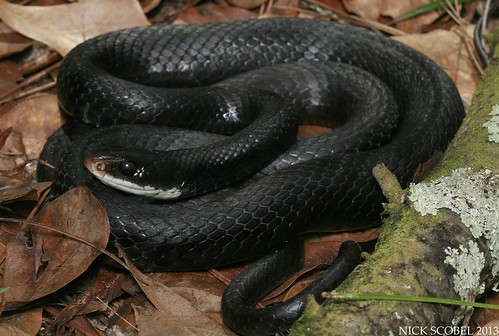

No comments:
Post a Comment